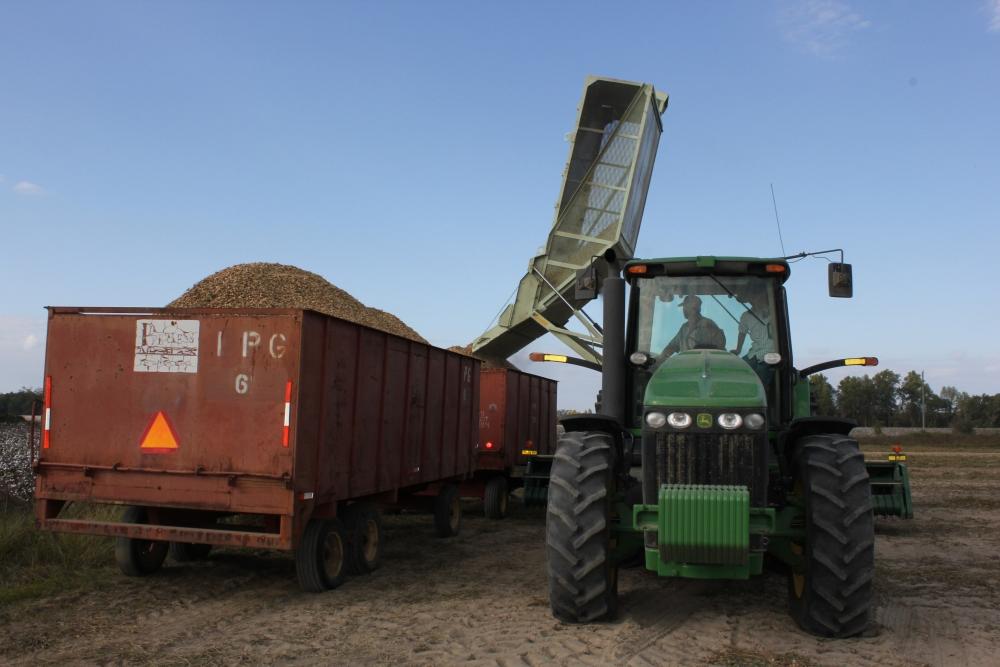
Section Branding
Header Content
Peanut Problems Hit Shoppers
Primary Content

Millions of Americans love a peanut butter sandwich. It’s easy to make, a “kid favorite” and, until now, relatively inexpensive. But in November, the price of peanut butter increased by more than a third.
Now, it’s lunchtime at the Barber home in Macon, Georgia. Three year-old Samuel has just gotten up from his nap -- and he’s hungry.
“Do you want to come up here and help me make a sandwich?”
“Uh-huh.”
“Do you like crunchy or creamy?”
“The creamy.”
Carol Barber says Samuel eats peanut butter for lunch almost every day. And he’s not the only one. She has three other little boys. She says it’s been one of her “go to” foods during this economic downturn.
“We’re always looking for things on sale. We are usually looking for non-name brand things and we try to find the biggest bang for our buck, especially in terms of feeding a family of six.”
But that’s getting harder to do. And to find out why, you don’t need to look any further than Benny Johnston’s farm 100 miles away, in Ocilla.
A peanut combine lumbers over the neat rows picking and separating the pods from the vine. Mounds of peanuts are dug up and dry in the sun. The “good” peanuts travel up a conveyor and into a bin.
Benny Johnston is 73 and has been farming since he was 16.
“How was this year different than years passed?”
“Well it’s been a trying year. We had so much hardship starting off with no moisture and all we had to contend with and then the heat was so excessive, heat we think hurt us a lot.”
But Johnston considers himself lucky. This year’s long, hot drought pummeled farmers. But he has an irrigation system. University of Georgia peanut agronomist John Beasley says without irrigation, many farmers would have no crop at all.
“Unfortunately I have walked some fields in this state this year that are going to end up with zero yield. Or the yields will be estimated to be so low by crop insurance that the cost of harvesting would not cover the value of what you would have harvested.”
And this is a problem for consumers because almost three-quarters of the Georgia harvest is used to make peanut butter. The cost of peanuts has already doubled.
To add to the problem Don Koehler with the Georgia Peanut Commission says farmers planted more cotton and corn this season.
“Those commodities were better than the peanut price, and I think the peanut industry kind of dropped the ball and didn’t, you know, get out there in front to say let’s be sure we get enough acres planted.”
Some farmers still hope for the best. Armond Morris stands in an empty field as a tractor pulls bins of peanuts to a nearby shelling facility.
“So far as peanut butter on the shelves, candy bars, peanut products on the shelves. But, it’s going to be tight.”
And tight for consumers too. Parent Carol Barber says if peanut butter prices get much higher, she may cut back and buy a lot less of one of her family’s favorite foods.
